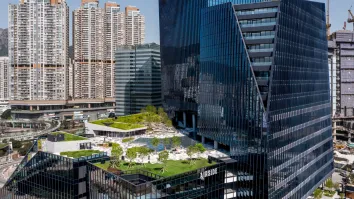
Japanese office rents in regional cities faring better than in Tokyo
Rents in Tokyo dropped 6.5% while Osaka and Nagoya recorded only 2.2% and 0.6% declines, respectively.
Having had to contend with the global pandemic for over a year, the regional investment-grade office markets have weakened. Conditions surrounding both vacancy and rents have diminished as a result.
All regions have seen vacancy rates rise to above 1.0%, with Nagoya and the capital exhibiting the largest loosening on an annual basis. Nevertheless, vacancy levels are still below 2.0% in all regions bar Nagoya and overall fundamentals remain sound.
Here’s more from Savills:
Looking at rents, Fukuoka saw a 1.3% YoY increase, partially boosted by the completion of some modern offices. Other markets were not so fortunate, with rents in Osaka and Nagoya falling by 2.2% and 0.6% YoY, respectively. It is notable, however, that rents in Tokyo plummeted by 6.5%, suggesting that investment-grade offices in regional cities are faring relatively better than the capital.
Looking a bit closer, this market downturn was not even across all the regions. Here, as usual, performance varies greatly depending on office location and quality although the overall changes witnessed in vacancies and rents are generally still at manageable levels. As such, there is hope that the regional office landscape will improve as vaccinations are expedited and the economy fully opens.
All-grade offices
As we would expect, with the eff ects of the pandemic lingering, growth in the all-grade market has cooled. However, the presence of growth in all regions except for Osaka, where rents contracted 0.3% YoY, is a positive development. In this regard, rents in Fukuoka and Sendai saw the greatest gains, rising by 2.5% and 2.4% YoY, respectively.
Meanwhile, vacancy rates have inched up across all regional markets. Sapporo exhibited the smallest expansion of 1.1 percentage points (ppts) YoY, while Sendai saw the largest of 2.0ppts YoY.
However, when compared to the loosening of 3.9ppts YoY in Tokyo, the relative vacancy movements in regional cities appear moderate.
Unsurprisingly, regional markets have not been immune from the impact of the pandemic. For starters, poor economic conditions have led to the closure of many small and medium enterprises – tenants commonly seen in such markets. Furthermore, the proliferation of flexible work arrangements has meant that some companies now require less office space than before. Consolidations and cancellations of relocations to larger floor plates have followed.
Despite the circumstances, regional offices have weathered the pandemic fairly well, particularly compared to the capital. One reason for this could be the difference in the level of remote work between the two. According to a study undertaken by the Ministry of Land, Infrastructure, Transport and Tourism (MLIT), remote work has been significantly more prominent in Greater Tokyo since the pandemic began. This is most likely to be due to the capital’s longer commute times and urban density. With this in mind, given their higher utilisation rates, regional office markets should prove more stable going forward.


















 Advertise
Advertise


